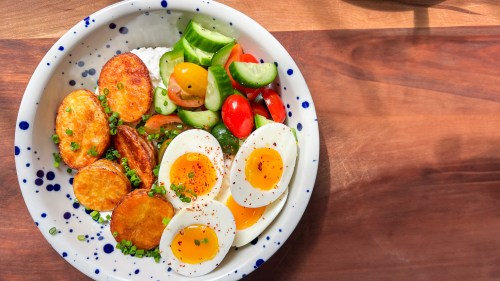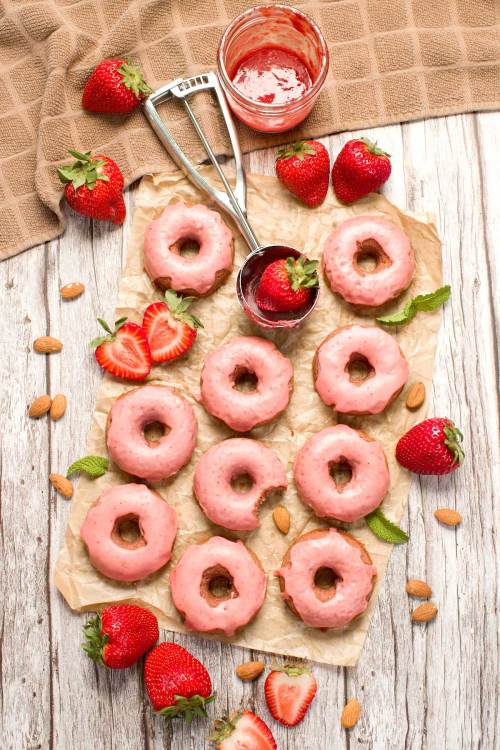Is a Smoothie Actually Enough To Be Considered a Balanced Breakfast? Here’s What an RD Has To Say
We asked a registered dietitian: Can a smoothie replace a meal. Discover her answer here—her answer may surprise you.

I’m a big fan of smoothies year round, but especially in the summer. They make for a nutritious, portable, and hydrating breakfast. Yet you may find that your morning smoothie isn’t holding you over until your a.m. snack or lunch, leaving you to wonder: Can a smoothie replace a meal?
If that’s happening for you, it could be a sign that your smoothie isn’t enough calorically and nutritionally. That being said, there are a bunch of fun, tasty ways to make a smoothie dense and well-rounded enough to serve as a meal. Learn my top tips (as a dietitian) for a well-rounded smoothie.
Can a smoothie replace a meal?
I’m going to be real with you—it depends! I know, that’s never anyone’s favorite answer, but it’s true! Whether or not a smoothie can replace a meal really depends on what’s in it. If you’re only adding frozen fruit and water, then that’s not a meal; that’s a light, refreshing snack.
In general, a meal should have a few food groups. I recommend trying to have carbs, protein, fat, and fiber at meals whenever possible. That’s important because each food group has different benefits, and when you eat them together, they promote health, satiety, blood sugar stability, and good energy levels.
The same applies to a smoothie. If you’re only adding fruit and water, then you’re really only getting carbs and fiber, not to mention you’re getting very few calories as far as a meal goes. I know diet culture has made us think that less calories is better, but calories are literally what gives us energy! We need them to function, so we need to make sure we have enough of them throughout the day. Adding protein and fat will not only help enhance the calorie content, but also help promote satiety.
How to enhance your smoothie’s nutrition
If as you read this you’re realizing that your smoothies could use a boost, I have you covered. Here are a few tips to enhance your smoothie for a satisfying, well-rounded morning meal.
Consider the liquid
When you make a smoothie, what liquid is your go-to? If it’s water, there may be room to reconsider. You could use juice, milk (dairy or non-dairy), or coconut water. I often recommend cow’s milk, soy milk, or pea milk because they are sources of complete protein and calcium. They’re the most well-rounded sources of nutrition as far as liquid options go.
That being said, if you’re enhancing the protein content of your smoothie in other ways, you may be okay to use a different liquid without sacrificing satiety.
Add nuts, seeds, or nut butter
This is one of my favorite ways to boost my smoothies. Some of my favorites are walnuts (which add creaminess) and peanut butter (because it’s delicious!). You can also find me adding chia seeds to almost every smoothie I make because they’re nutritionally well-rounded and rich in fiber and omega-3 fatty acids.
If you’re allergic to nuts you could also lean on sunflower seed butter or pumpkin seeds. The goal of adding nuts and seeds is to enhance the flavor and texture of your smoothie, and to add protein and heart-healthy fats. In fact, adding dietary fat will help your body absorb the fat-soluble vitamins (vitamins A, D, E, and K) present in the other ingredients.
Lean on dairy (or dairy alternatives)
Dairy is an easy way to add protein and potentially fat to your smoothie. You can use milk as the liquid (like I suggested above) or you can add yogurt or kefir, which are also a good source of probiotics.
With kefir, you may not need another liquid at all, but with yogurt, you could use juice, coconut water, or even regular water since you’ll be getting protein and calcium from the yogurt itself.
If dairy is a no-go for you, then consider adding soy products since these are generally most comparable to cow’s milk products. Oat, cashew, or coconut yogurt won’t have as much protein as cow’s milk yogurt.
Try protein powder
Another viable option is adding protein powder to your smoothie. This could be especially helpful if you’re having a smoothie after a strength-training workout where refueling with protein is key for muscle repair and recovery.
Most people don’t really need to use protein powder, but if you like using it, I recommend buying a third-party tested option so you know the label is accurate and that it’s free from harmful contaminants.
Use frozen fruits and veggies
All this talk of adding protein and fat doesn’t mean that fruits and veggies aren’t important too. One of my favorite things about smoothies is that they are an easy way to boost your fruit and veggie intake. So, incorporate your favorites for added fiber, vitamins, and minerals. My personal favorite combo is banana, blueberry, and spinach, but get creative and mix it up!
Please, don’t be afraid to buy frozen. Many people think they need to buy fresh produce, but frozen produce is just as nutritious. Plus, it has a way longer shelf life, which can reduce food waste and save your wallet. It’s also an easy way to boost the nutrition because you don’t have to take up more volume by adding ice; the frozen fruit is cold enough to make a chill drink.
Bottom line
Smoothies can be a convenient, nutrient-packed breakfast if they’re made with intention. I invite you to say goodbye to low-calorie, fruit and ice smoothies and hello to well-rounded, satisfying smoothies. While fruit and ice may make for a refreshing snack, a smoothie packed with carbs, protein, fat, and fiber can keep your blood sugars stable, your energy levels strong, and your stomach satisfied until your next meal or snack.
Sign Up for Our Daily Newsletter
Get all the latest in wellness, trends, food, fitness, beauty, and more delivered right to your inbox.
Got it, you've been added to our email list.










